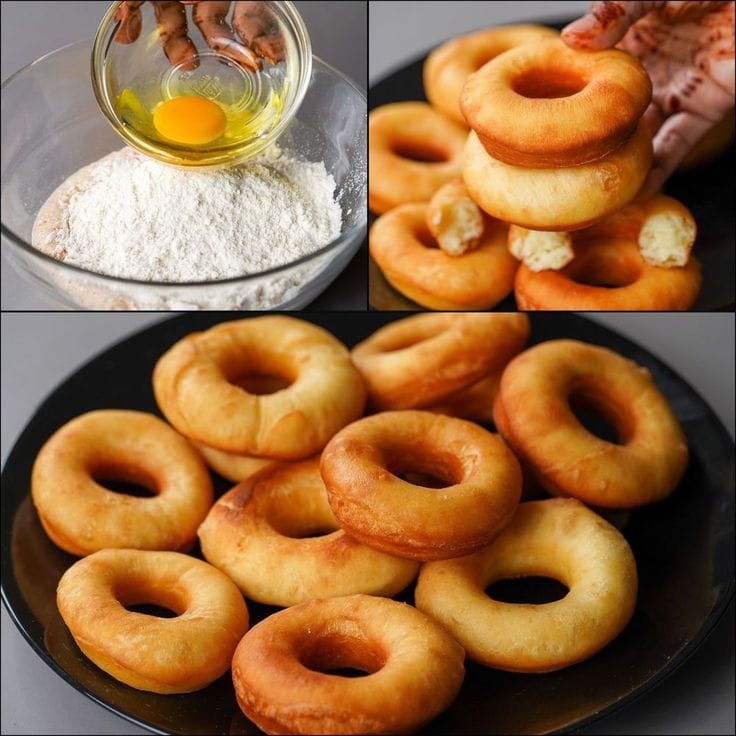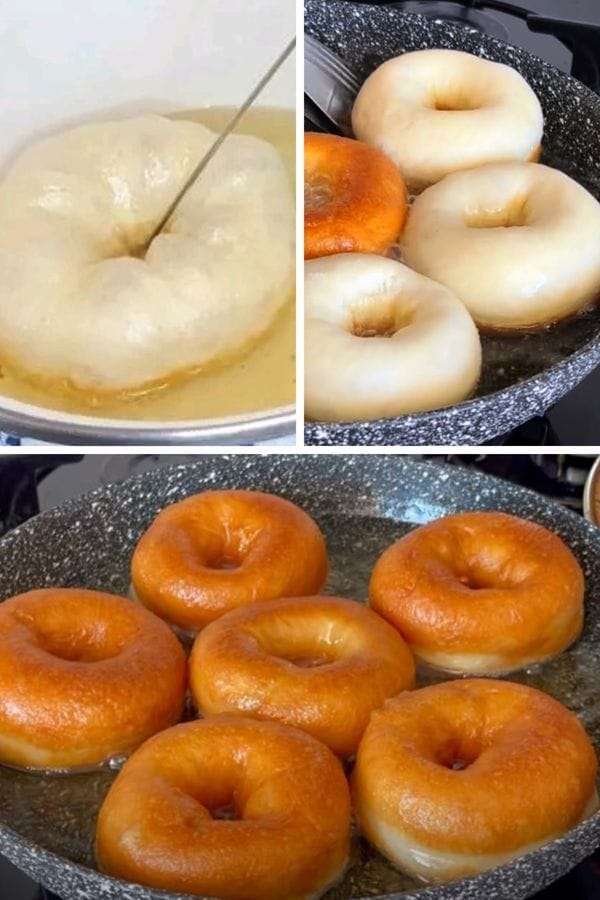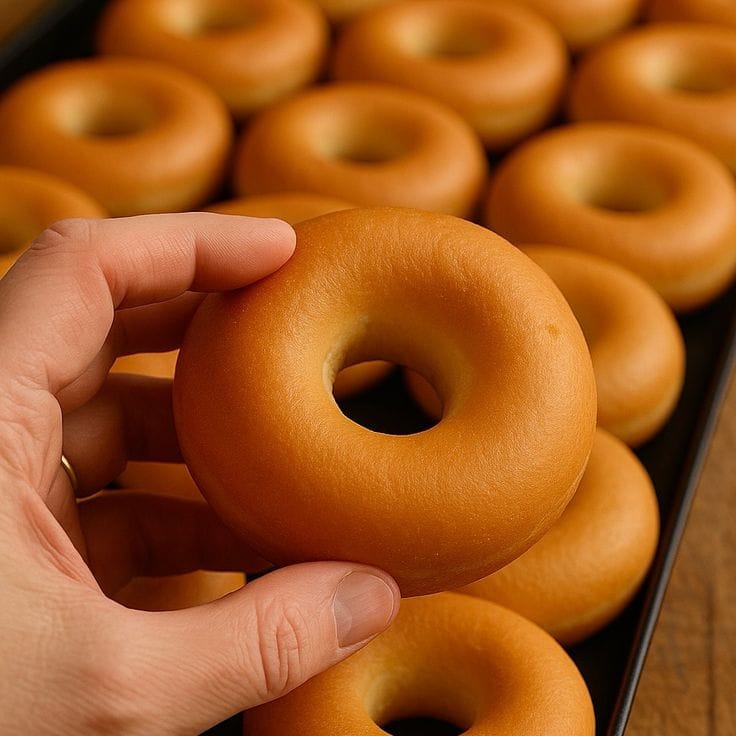When it comes to making the perfect doughnuts—those soft, fluffy, and golden pillows of joy—there’s one key ingredient that can make or break your recipe: flour. Whether you’re a home baker or a pastry chef, understanding how flour affects the texture and flavor of doughnuts is essential to crafting the ultimate sweet treat. In this article, we’ll explore the best flour for doughnuts, how to achieve a light and airy texture, and some expert tips to make your doughnuts a mouthwatering success.
Why Soft and Fluffy Doughnuts Are Everyone’s Favorite
Doughnuts have a special place in the hearts (and stomachs) of dessert lovers. From classic glazed to filled or frosted varieties, there’s something irresistible about biting into a freshly made, soft, and fluffy doughnut. Unlike dense or dry ones, a truly great doughnut is light, tender, and melts in your mouth—and achieving that depends largely on flour selection and proper technique.
The Role of Flour in Doughnut Making
Flour is the foundation of any dough recipe. But not all flours are created equal. The type of flour you use will determine how your doughnuts turn out—whether they’re soft and airy or chewy and tough.
Flour Basics: Protein Content Matters
The protein content in flour affects gluten development, which in turn impacts the texture of your doughnuts:
- High-protein flours (like bread flour) develop more gluten, resulting in a firmer structure.
- Low-protein flours (like cake flour) develop less gluten, leading to a softer and more tender texture.
For doughnuts, especially the yeast-raised or brioche-style ones, a moderate protein content is ideal to ensure the dough holds its shape but stays light and fluffy.
Best Flour for Soft and Fluffy Doughnuts
Here’s a breakdown of the most commonly used flours and how they affect your doughnut texture:
1. All-Purpose Flour (AP Flour)
This is the most versatile and widely used flour. With a protein content of around 10-12%, it strikes a balance between strength and tenderness.
Best for: Yeast-raised doughnuts
Pros: Easy to find, good structure, tender bite
2. Cake Flour
Cake flour contains only 7-9% protein, making it ideal for extra soft and light doughnuts, especially cake-style ones.
Best for: Cake doughnuts
Pros: Tender crumb, delicate texture
Cons: May be too soft for yeast doughnuts
3. Bread Flour
With a higher protein content of 12-14%, bread flour develops more gluten, making the dough more elastic but potentially too chewy for soft doughnuts.
Best for: Structured or filled doughnuts
Use with caution: Blend with AP flour for better results
4. Pastry Flour
A middle ground between cake and AP flour with about 9% protein, pastry flour can yield ultra-tender doughnuts that still hold shape.
Yeast Doughnuts vs. Cake Doughnuts: Flour Choice Differences
Understanding the difference between yeast-raised and cake doughnuts is crucial for choosing the right flour:
- Yeast Doughnuts rise due to fermentation. They require a bit more gluten strength for shaping but should still be soft and airy.
✅ Best flour: All-purpose or a mix of bread and cake flour
✅ Keyword: fluffy yeast doughnuts - Cake Doughnuts rely on baking powder or baking soda. They don’t need much gluten and benefit from softer flours.
✅ Best flour: Cake flour or pastry flour
✅ Keyword: soft cake doughnut recipe

How to Make Soft and Fluffy Doughnuts: Expert Tips
Achieving bakery-style doughnuts at home requires more than just the right flour. Let’s break down the key techniques that, along with the right flour choice, lead to doughnut perfection.
1. Don’t Overmix the Dough
Overmixing activates too much gluten, which leads to tough, dense doughnuts. Mix until just combined, especially for cake doughnuts.
2. Allow the Dough to Rise Properly
For yeast doughnuts, the first rise should double in size. A slow rise creates a better texture. Let your dough ferment for at least 1-2 hours, or overnight in the fridge for extra flavor and fluffiness.
3. Use Room Temperature Ingredients
Cold ingredients can slow down yeast activity or affect the batter consistency in cake doughnuts. Always use room temperature milk, eggs, and butter.
4. Choose the Right Frying Temperature
The ideal frying temperature is 350°F (175°C). Too low and the doughnuts absorb oil; too high and they burn before cooking through.
✅ Keyword: how to fry fluffy doughnuts
5. Drain and Cool Properly
After frying, place the doughnuts on a wire rack or paper towels to drain excess oil. Let them cool slightly before glazing for a perfectly finished treat.
Troubleshooting Common Doughnut Texture Problems
Here’s how to fix common issues related to doughnut texture:
- Doughnuts are too dense?
➤ Likely too much flour or not enough rising time. Use softer flour like cake or pastry for lighter results. - Doughnuts too oily?
➤ Frying temperature too low. Use a thermometer to maintain the right heat. - Dry texture?
➤ Possibly overcooked or used high-protein flour without enough fat in the dough.
➤ Consider adding buttermilk, egg yolks, or butter to enrich the dough.
Recipe: Soft and Fluffy Yeast Doughnuts
Ingredients:
- 3 ½ cups all-purpose flour (or 3 cups AP + ½ cup cake flour for softer texture)
- 2 ¼ tsp active dry yeast
- 1 cup warm milk
- ¼ cup granulated sugar
- 2 eggs
- ½ tsp salt
- ¼ cup unsalted butter, softened
- Oil for frying
Instructions:
- Activate the yeast: In a bowl, combine warm milk, sugar, and yeast. Let sit for 5–10 minutes until frothy.
- Make the dough: Add eggs, salt, and butter. Gradually mix in the flour. Knead until smooth.
- Let it rise: Cover the dough and let rise until doubled in size, about 1.5 hours.
- Shape the doughnuts: Roll out the dough and cut with a doughnut cutter. Let them rise again for 30 minutes.
- Fry: Heat oil to 350°F and fry each side for about 1 minute until golden brown.
- Cool and glaze: Let them drain and cool slightly before glazing.

Glaze Options for Doughnuts
Your soft and fluffy doughnuts deserve the perfect glaze. Here are a few options:
- Classic Vanilla Glaze – powdered sugar + milk + vanilla
- Chocolate Ganache – melted chocolate + cream
- Maple Glaze – powdered sugar + maple syrup
- Cinnamon Sugar – roll in cinnamon and granulated sugar mix
Flour Alternatives for Gluten-Free Doughnuts
Want to enjoy fluffy doughnuts without gluten? Try these flours:
- Almond flour – adds moisture but needs binders like xanthan gum
- Oat flour – great for cake doughnuts
- Rice flour – often used in combination with tapioca for gluten-free blends

Final Thoughts: The Secret Is in the Flour
If you’re looking to master the art of soft and fluffy doughnuts, remember that flour is your foundation. Whether you’re aiming for pillowy yeast doughnuts or tender cake-style ones, the right flour makes all the difference. Using a blend of all-purpose and cake flour, paying attention to dough handling, and following smart baking tips can elevate your doughnuts from average to bakery-quality perfection.
So next time you’re craving that golden, fluffy treat, don’t underestimate the power of a good flour choice—it’s the secret ingredient to doughnut bliss.
